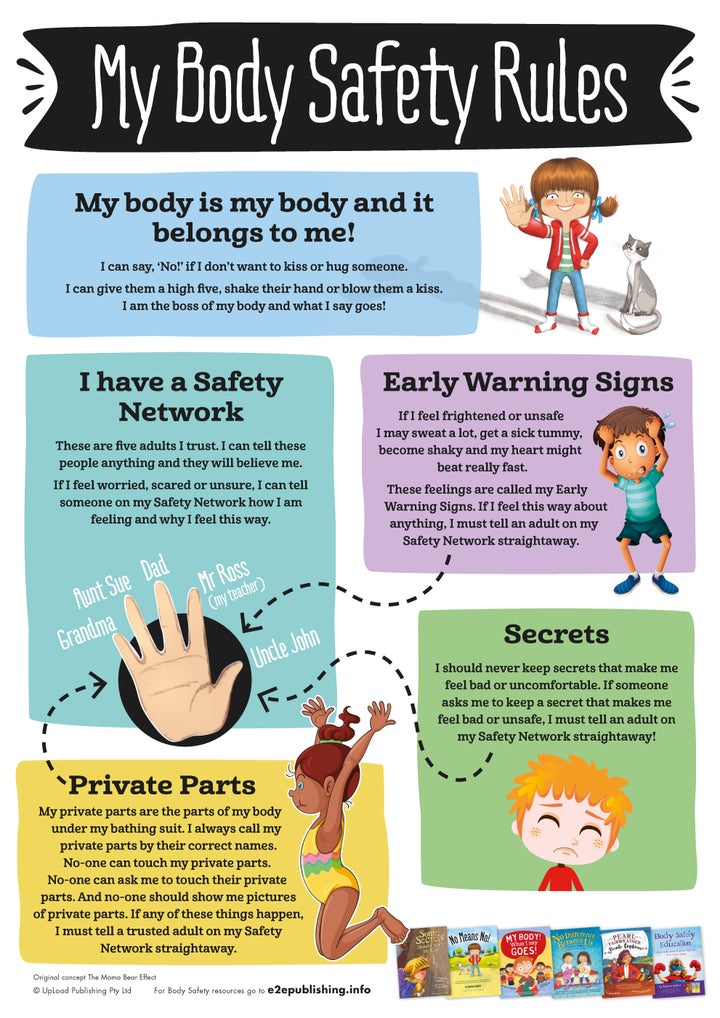
You can help to protect your child from sexual abuse by teaching the following crucial Body Safety Rules.
1. From an early age, teach your child that their body is their body and it belongs to them. Explain that they have the right to say “no” if they don’t want to be kissed or hugged by someone.
In a greeting situation, encourage your child to offer the person a high-five or a handshake (or, with people they know well they could blow them a kiss instead). Other adults may be offended by your family’s stance on this issue, but the best option is to explain your family’s reasons behind this practice.
Keep in mind it is our job as parents and carers to empower our children and not to pacify the occasional disapproving adult and/or relative.
2. Help your child to create a Safety Network. A Safety Network is made up of three to five adults that your child trusts. These are adults your child could tell anything to and they would be believed. The people who have the honor of being on your child’s Safety Network should be adults who will listen to your child’s concerns, who will always believe them, and who are accessible. Remember, it is your child’s choice who they place in their Safety Network.
3. Talk to your child about their Early Warning Signs. Explain that if they feel worried or unsafe, their body will let them know. Their Early Warning Signs may include feeling sick in the stomach, feeling shaky, their heart racing, etc. Explain to your child that if they feel any of their Early Warning Signs, they must tell an adult on their Safety Network straightaway.
4. Always call your child’s private parts by their correct names. Explain that no child, teenager or adult can touch their private parts, that they should never touch another person’s private parts even when asked, and that they should not view images of private parts.
Explain that if any of these things happen, they have the right to say, “no” or “stop,” and then they must tell an adult on their Safety Network straightaway. If that person is not available, they will need to tell another person on their Safety Network. Reinforce that your child needs to keep telling until they are believed.
5. Discourage secrets. Explain that your family has “happy surprises” instead of secrets because happy surprises will always be told. Explain that if someone does ask them to keep a secret, they should tell that person that they don’t keep secrets. Reinforce that if someone does ask them to keep a secret that makes them feel unsafe or uncomfortable, they must tell an adult on their Safety Network straightaway.
A few final hints!
1. Decide on a “family word.” For example, “pickles.” So if your child is somewhere without you or in a situation where they can’t speak up, and they feel unsafe, they can call or shout out “pickles.” This will alert you to the fact that they feel unsafe and need to be removed from the situation immediately.
2. Educate yourself in Body Safety; this includes signs of child sexual abuse and the grooming process. Remember, sexual predators groom both parents and children.
3. Encourage your child’s school to teach Body Safety! And if they don’t, please ask why not.
Free to view and share My Body Safety Rules animation.
Free to download My Body Safety Rules poster.
Free to download My Early Warning Signs poster.